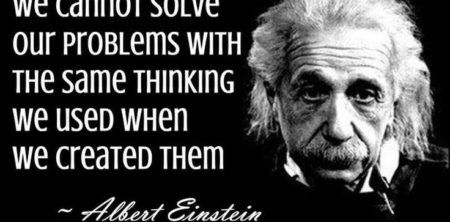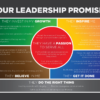There is one fairly simple tool that, if used, will make a huge impact on any improvement or problem solving effort. One rather simple tool. It's so simple, and yet it is rarely considered. Over and over again, I see organizations make mistakes where they make small incremental improvements. They spend time on something and only marginally improve the product or process (normally due more to focus than actual change). I have seen individuals make the same mistake. Even process improvement people with years of experience who were even trained on this simple tool and yet never take a few minutes to incorporate it. In fact, many of the process improvement training classes that I have seen often skip it entirely. It's a shame because it is so powerful and so easy. The result is consistently limited to marginal improvements.
Now what IF, by using that one fairly simple tool, we could make a bigger impact with the same amount of effort? Just by thinking a little differently than we did when the problem was created.
Here's the interesting thing... the companies who have used this fairly simple tool have a consistent history of outperforming every other company in their industry by leaps and bounds. Personally, when I have used this very simple tool, people have called me a genius. (I am no genius. Of that, I'm sure! I just have a tool that helps me solve problems and think of solutions in a way that gets better results. It's simple.) In fact, many of true historical geniuses used this tool to solve large, complex problems.
What tool am I referring to? Well, some people may call it benchmarking, but it's much more than the traditional approach of comparing oneself to one's competitors. It's more like cross-industry benchmarking. In Learning & Development language, it's called Lateral Thinking. In Design For Six Sigma, we are taught a tool called TRIZ - which basically is a pre-designed algorithm for enabling Lateral Thinking. In Neuro Linguistic Programming, it is done through a process of Chunking Up, Laterally, and Down. They are all very similar, if not the same. And they are some of the most powerful "out of the box" enablers.
My favorite example of benchmarking for problem solving is from Southwest Airlines. When they wanted to reduce turnaround time at the gate, did they benchmark other airlines? NO! They identified the main area that slowed them down: airplane maintenance between flights. Then they went to people with expertise in high-quality maintenance of vehicles in the least amount of time. Who does that? NASCAR pit crews. Southwest learned from NASCAR and applied the techniques to help them reduce their turnaround time at the gate, which set a new standard in the airline industry.
Last year, I was helping a large integrated resort hotel & casino improve the customer experience at the desk. The feedback from a lot of the team members centered around how much time they spent giving directions. We decided to look into the maps that people were using. Besides finding 3-4 different maps provided by different groups within the building, we also found that they didn't match signage. Having one consistent map that matched signage in the building would be a big improvement. And yet, while we were making changes, shouldn't we consider the quality of the map? Did it have all of the elements guests needed to easily find their way? (If not, the map would continue to be revised incrementally for years to come!!) WHO might be a good benchmark to consider? An entity who is focused on providing an amazing customer experience, who has a high volume of international clientele flowing through it on a daily basis, and must find a way to help everyone easily locate their path to a variety of services that are provided in a non-grid like fashion? How about Disney Theme Parks?? I downloaded a copy of the latest map of Disneyland. WOW! When the team compared the two, it became glaringly obvious that our maps were missing a tremendous amount of valuable information!! And there were some universal symbols that could be easily included in our maps to make them useful across languages. One easy step saved years of small incremental improvements.
I came across another example recently and wanted to share it with you. Callaway golf clubs wanted to improve the design of their driver. Because of it's size, it also tends to have a bit of drag on it. What if there were a way to reduce drag while maintaining the strength of the club? Who knows a lot about drag on high velocity products and how to maintain structural integrity? Boeing. Check out this video:
Awesome, right? Some might say "Genius."
So, why aren't more people and companies using this simple and powerful tool? Why have so many Six Sigma programs dropped this from their training? You tell me. I'd love to hear your thoughts.










Williamvads